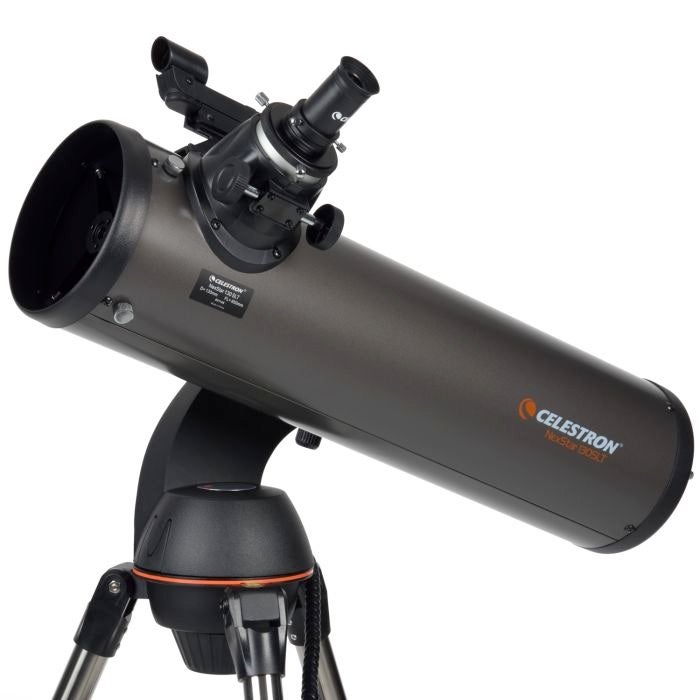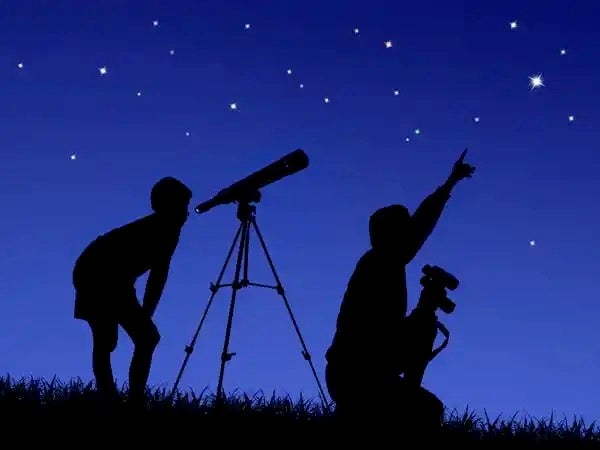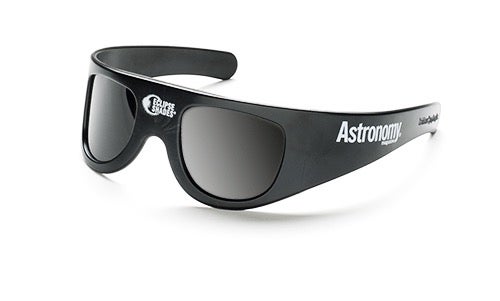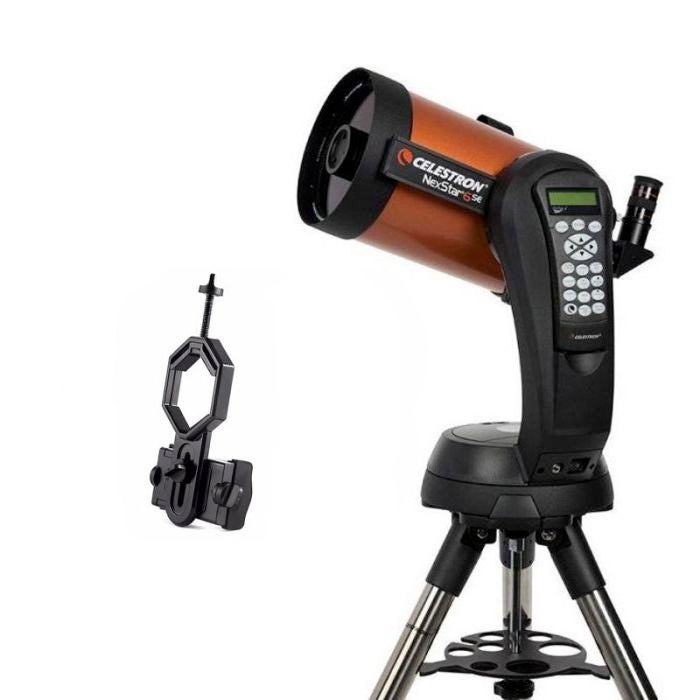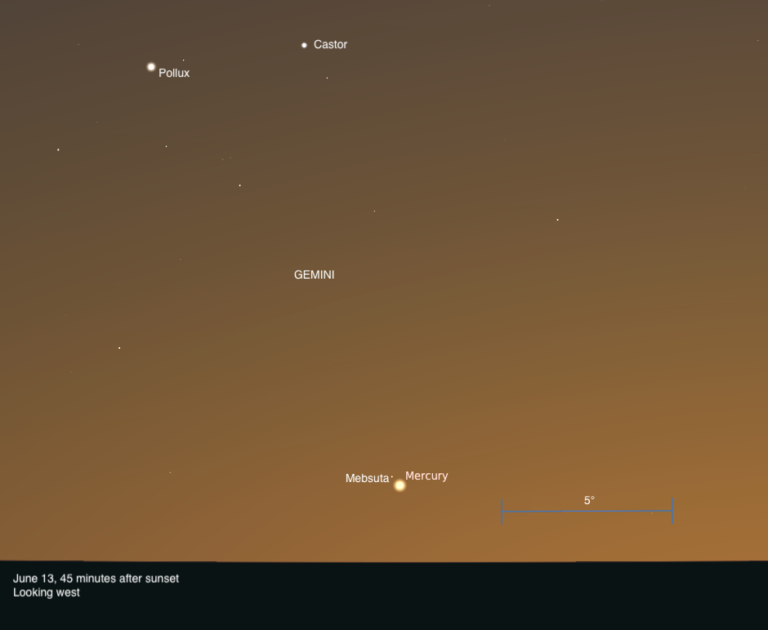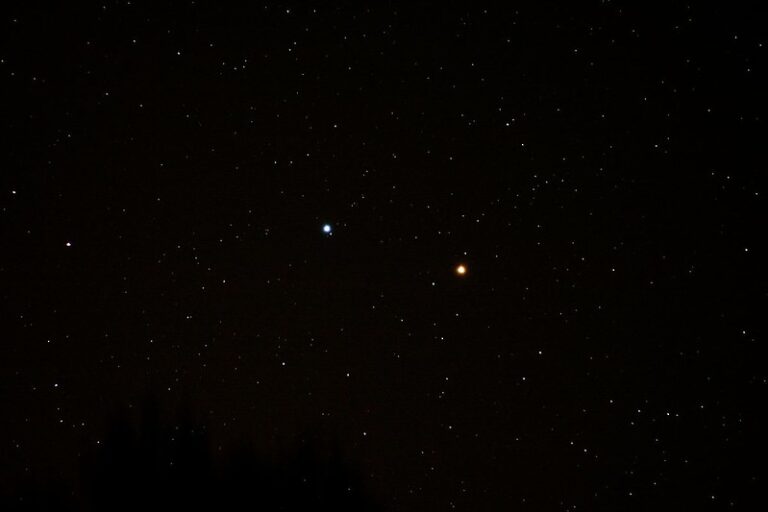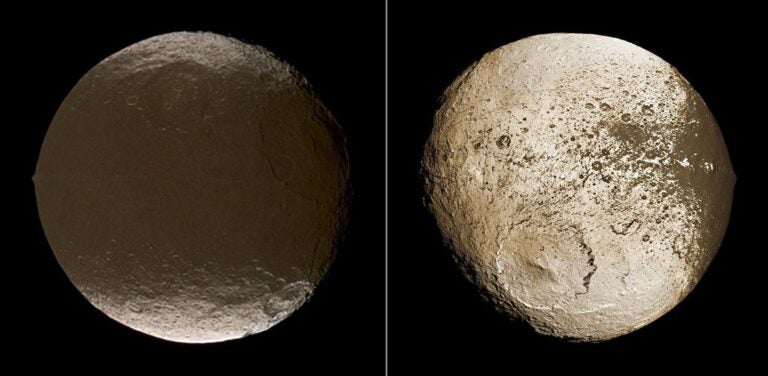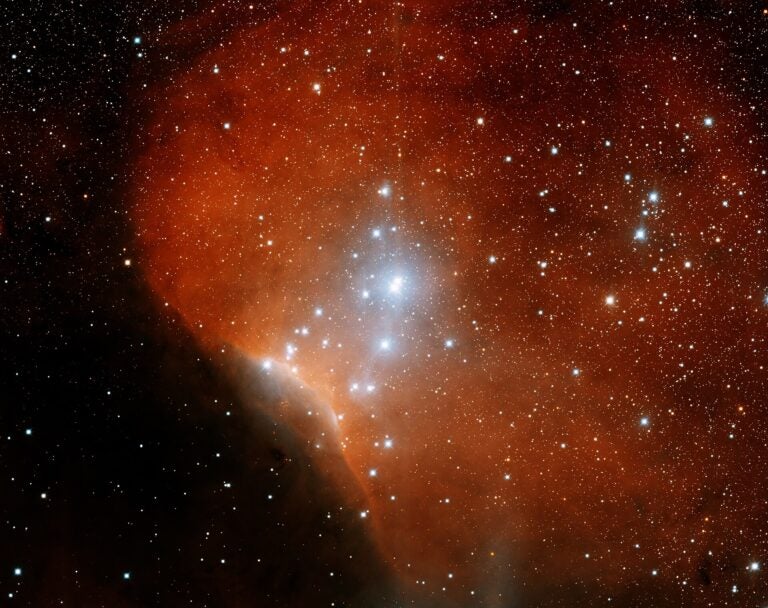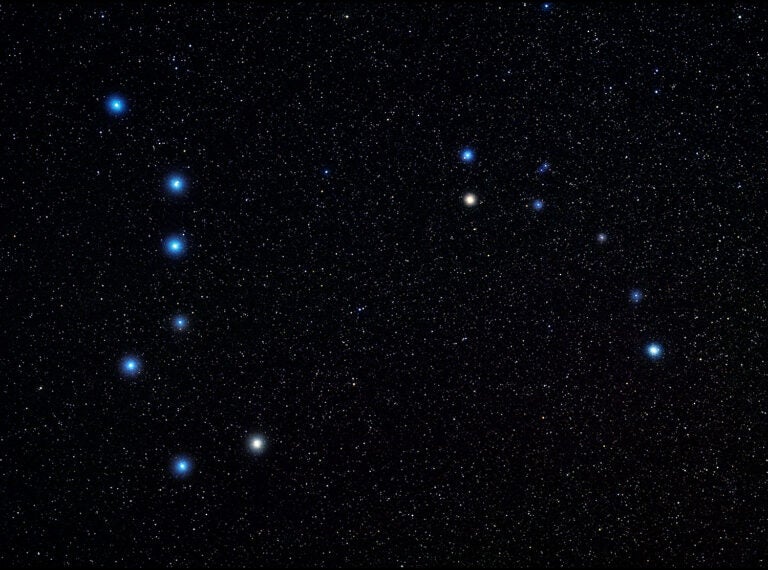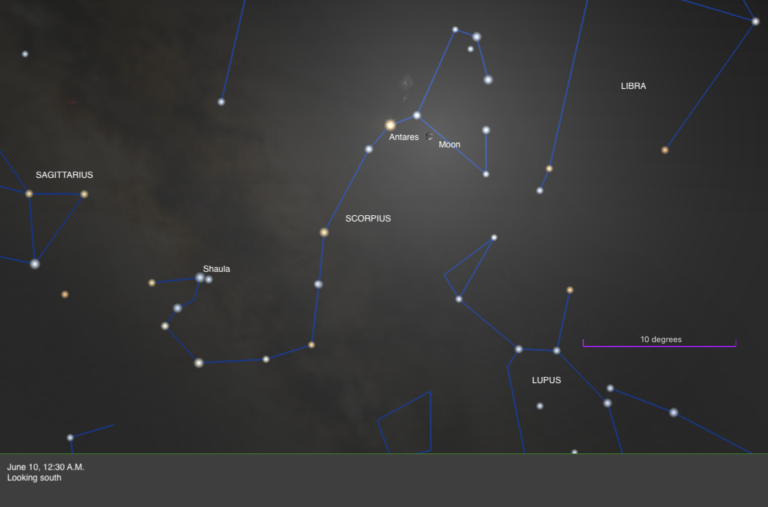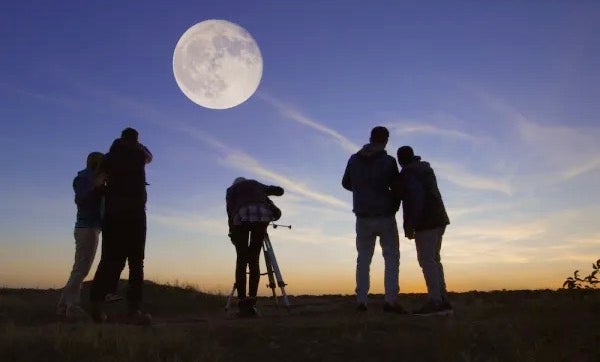
Note: This post contains affiliate links. When you buy a product through the links on this page, we may earn a commission.
Maybe you have had a casual interest in astronomy for years, looking up at the night sky every chance you get. Or maybe you’ve just recently become interested in the wonders hanging high above our heads. Either way, you’ve decided to take the next step and get your first telescope. Thumbing through Astronomy’s pages, you see many that are intriguing. But at the same time, you’re baffled. What kind should you get? What are the best telescopes for beginners? How much do you really have to spend? Which is best for you?
These are all important questions that you need to answer before purchasing a telescope, whether it’s your first scope or 10th. This overview will help shed some light.
Some questions to help narrow down your choices
Before you decide which type of telescope to get, you need to take a hard look at your situation. Ask yourself the following questions and be honest with your answers.
What is your budget? While you may feel some sticker shock when you look at telescope prices, the good news is that you do not need to spend a small fortune purchasing your first telescope. You can get a very nice instrument for under $300.
If your budget is a bit higher, you can purchase a well-appointed instrument for $1,000 to $1,500. But avoid the urge to go straight to a high-tech telescope immediately. While they are tempting, many newbies find them daunting to set up and use.
Where will you use it? This might not be the first thing you think of, but it’s critical in deciding what kind of telescope to get. Will you be using your telescope from home, where you set it up in your yard for a night under the stars? Or do you need to drive a good distance to view the sky properly?
If your location of choice is hours away, then look for telescopes that are quick and easy to set up. And, for those driving to a location, double check that it will safely fit into your car before purchasing.
Where will you store it? This is an issue that many amateurs don’t consider. Ideally, your telescope should be easily accessible and stored in an unheated but clean location. Keeping it at the ambient outdoor temperature will speed the optics’ acclimation to the night air. By contrast, bringing a scope into the cool night air from a heated home will cause images to blur due to heat currents in the tube before the components stabilize. You can read more ways to care for your telescope here.
Storage will also play a major role in the size of the telescope you choose. For instance, if you must carry it down a flight of stairs, it should be compact and light enough not to create a fall hazard.
Related: The best telescopes for kids, picked by experts | Best telescopes for $1,000 or less | Best telescopes for $500 or less
Types of telescopes: Refractor, reflector, and catadioptric
Today’s astronomers use one of three basic telescope designs: the refractor, the reflector, and a hybrid design called the catadioptric.
Refractors are recognizable by their long, slender tubes. A large objective lens sits in the front, while the observer looks through an eyepiece at the back. Changing the eyepiece will change the telescope’s magnification.
Reflectors, on the other hand, don’t have a lens up front. Instead, they use a large, concave primary mirror located near the bottom of the tube to gather light from a target and bring it into focus.
The most popular type of reflector among amateurs is the Newtonian. Light reflects from the primary to a small, flat secondary mirror tilted at 45°. The light then bounces off the secondary and out through a hole in the side of the front of the tube and into an eyepiece.
Finally, catadioptric telescopes combine both lenses and mirrors. Light first passes through a large front lens, called the corrector plate, and on toward the primary mirror at the back of the tube. The corrector plate reduces or eliminates aberration caused by the mirrors. After bouncing off the primary, the light reflects toward a secondary mirror at the front, then back through a small hole in the middle of the primary and into an eyepiece.
So, which of these telescopes is best for beginners? That depends on your answer to the earlier questions as well as where your interests lie.
If you crave sharp, highly detailed views of bright sky objects, such as the Moon, planets, double stars, and sparkling star clusters, then a refractor is ideal. They come in apertures ranging from 2 to 6 inches (5 to 15 centimeters). Smaller models are perfect for anyone who prefers extreme portability — think scopes you might bring on a family camping adventure — or is looking for a quick grab-and-go instrument to run outside with on a given clear night.
RELATED: The Full Moon calendar | What’s in the Sky This Week
If, however, you prefer hunting for faint fuzzies such as nebulae and galaxies, then a reflector is a better choice. Dollar for dollar, reflectors offer the largest aperture for the investment. These instruments range from 3 to 25 inches (7.6 to 64 cm) in size and, if you want to spend the money, you can even get a larger custom-made scope.
Finally, if you want a reasonably large aperture but at the same time need portability to travel to dark skies, then a catadioptric is a great choice. Their apertures run between 3 and 16 inches (7.6 and 41 cm).
The types of mounts for telescopes
Just as important as the kind of telescope is the type of mount used to support it. A good mount must be strong enough to carry the telescope’s weight while minimizing vibrations.
Altitude-azimuth mounts move both in azimuth, or left to right, and in altitude, up and down. Many are simply aimed by hand, while more elaborate models feature computerized aiming and tracking systems.
A popular variation of the altitude-azimuth mount turns a Newtonian telescope into what is called a Dobsonian telescope. Dobsonians are simply Newtonian reflectors situated on a mount that moves up and down in elevation and pivots in azimuth, like a lazy Susan. Most are aimed by hand, although some are tricked out with computerized drive systems.
Alternatively, many telescopes come on equatorial mounts. These mounts compensate for Earth’s rotation by keeping on the rotational axis parallel to Earth’s axis of rotation. Because of this, the mount can stay fixed on a celestial object just by moving one axis at a constant speed. The two most popular designs among amateur astronomers are the German equatorial mount and the fork mount. Both are widely available with computerized aiming and tracking systems. Many amateurs prefer equatorial mounts, but bear in mind that some mounts — especially the German equatorial style — can be much heavier than alt-azimuth mounts.
Here are a few suggested models that would make a great first telescope. We’ll start with the refractors.
Note: These product details contain affiliate links. When you buy a product through the links on this page, we may earn a commission. Astronomy has not accepted payment for any of these product reviews.
Celestron AstroMaser 102AZ
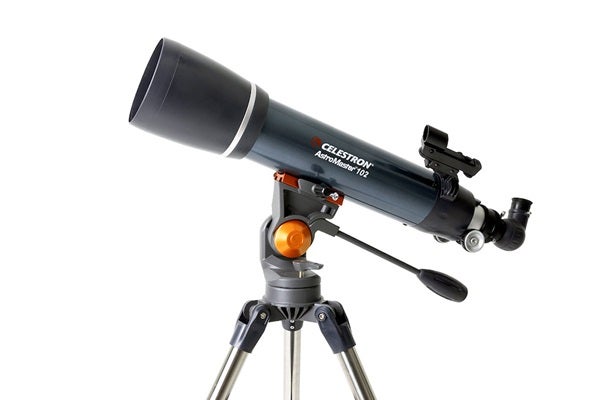
This 4-inch (10.2 cm) refractor pairs a well-designed telescope on a simple altitude-azimuth mount. It comes with two eyepieces, a finder scope, and an erect image diagonal for both astronomical and terrestrial viewing.
Celestron AstroMaster 102Z specifications
- Price: $349.95. You can see the latest prices and purchase here on High Point Scientific.
- Mount: altitude-azimuth
- Aperture: 4 inches (10.2 cm)
- Focal length: 660mm
- Focal ratio: f/6.5
- Eyepieces: 20mm (33x) and 10mm (66x)
- Weight: 12.2 pounds (5.53 kg)
Stellarvue SVX102D
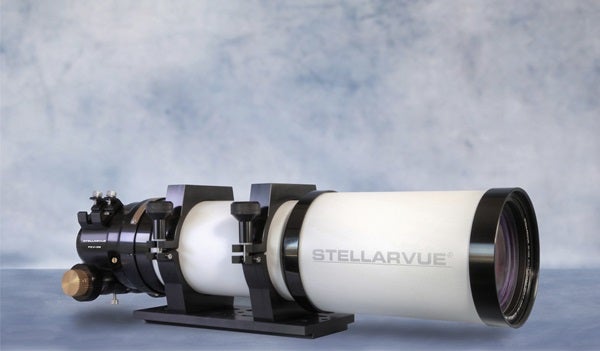
Featuring an advanced 4-inch (102mm) objective lens, the SVX102D delivers incredibly sharp images. Be aware that you will need to purchase a mount and other accessories separately.
Stellarvue SVX102D specifications
- Price: $2,195.00.
- Mount: altitude-azimuth or equatorial
- Aperture: 4 inches (10.2 cm)
- Focal length: 714mm
- Focal ratio: f/7
- Eyepieces: not included
- Weight: 9 pounds (4.1 kg)
Explore Scientific FirstLight AR127
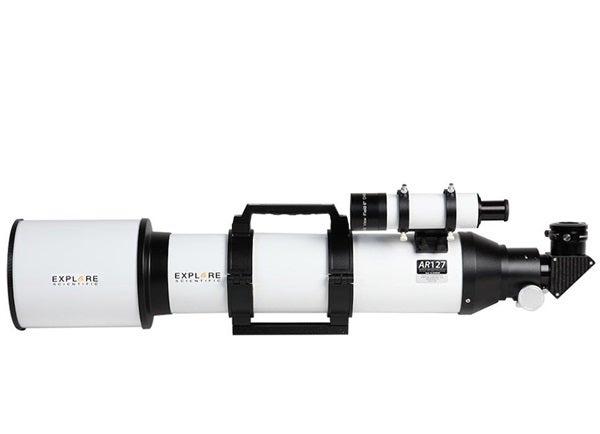
Equipped with the Twilight I Mount, the AR127 features a 5-inch (12.7 cm) objective. Accessories include a 25mm eyepiece, a star diagonal, a red-dot finder, and a smartphone camera adapter.
Explore Scientific FirstLight AR127 specifications
- Price: $749.99. You can see updated prices and purchase this telescope here.
- Mount: altitude-azimuth or equatorial
- Aperture: 5 inches (12.7 cm)
- Focal length: 826mm
- Focal ratio: f/6.5
- Eyepieces: not included
- Weight: 15.6 pounds (7.1 kg)
Tele Vue 85
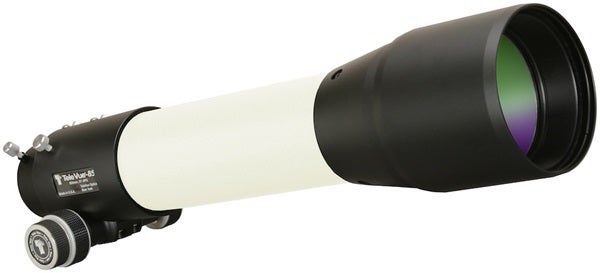
For those looking for a grab-and-go telescope, the 3.35-inch (8.5 cm) TV85 is a great choice. Couple it to a sturdy mount (sold separately) and you have a wonderful scope for both astronomical and terrestrial viewing.
Tele Vue 85 specifications
- Price: $2,167.00. You can see updated prices and purchase this telescope here.
- Mount: altitude-azimuth or equatorial
- Aperture: 3.35 inches (8.5 cm)
- Focal length: 600mm
- Focal ratio: f/7
- Eyepieces: not included
- Weight: 6.1 pounds (2.8 kg)
These some of the best telescopes for beginners in the reflector category:
Celestron StarSense Explorer DX 130AZ
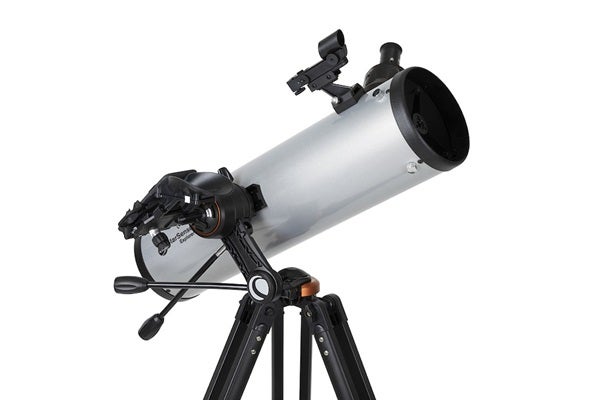
This 5.1-inch (13 cm) Newtonian comes on an innovative altitude-azimuth mount. After installing the free StarSense app on your smartphone and mounting the phone in the included cradle, you use the app to help while manually aiming the telescope. It also includes two eyepieces and a red-dot finder.
Celestron StarSense Explorer DX 130 AZ specifications
- Price: $479.95. You can see updated prices and purchase this telescope here.
- Mount: altitude-azimuth
- Aperture: 5.1 inches (13 cm)
- Focal length: 650mm
- Focal ratio: f/5
- Eyepieces: 25mm (26x) and 10mm (65x)
- Weight: 18 pounds (8.2 kg)
Orion SkyView Pro 8
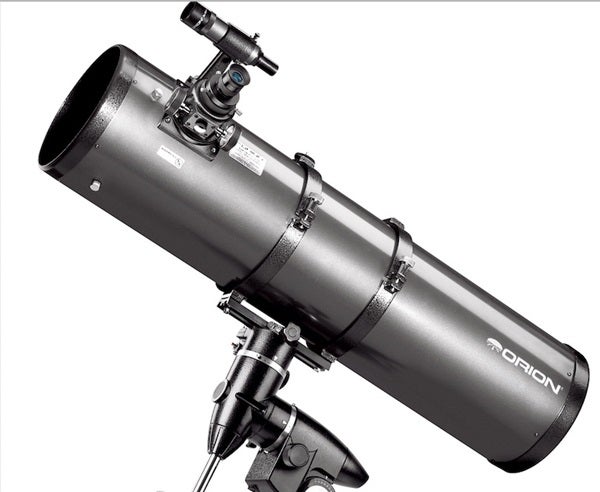
This 8-inch (20.3 cm) reflector mates a well-appointed Newtonian to a substantial German equatorial mount and tripod. Standard accessories include two eyepieces and an 8×40 finder scope.
Orion SkyView Pro 8 specifications
- Price: $849.99.
- Mount: equatorial mount
- Aperture: 8 inches (20.3 cm)
- Focal length: 1000mm
- Focal ratio: f/4.9
- Eyepieces: 25mm (40x) and 10mm (100x)
- Weight: 56.5 pounds (25.6 kg)
Sky-Watcher Classic 200P
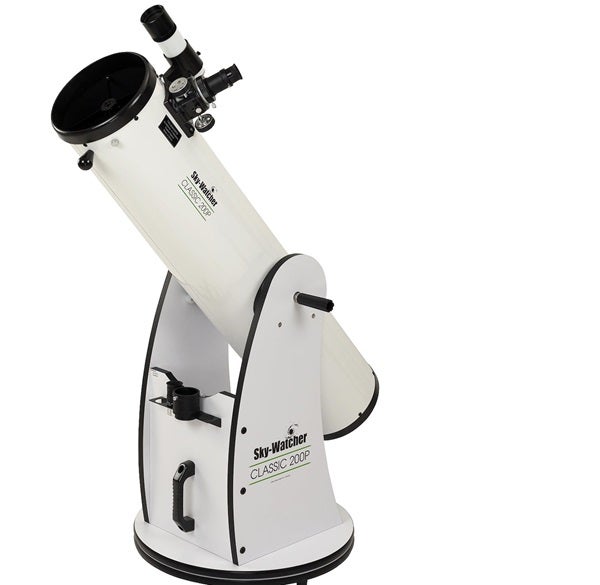
This basic Dobsonian delivers a lot at an affordable price. The 8-inch (20 cm) primary mirror gathers enough starlight to reveal faint galaxies, clusters, and nebulae. The mount may be no-frills, but it is built to last for years. Two eyepieces, dust caps, and a finder scope are also included.
Sky-Watcher Classic 200P specifications
- Price: $655.00. You can see updated prices and purchase this telescope here.
- Mount: Dobsonian
- Aperture: 8 inches (20 cm)
- Focal length: 1200mm
- Focal ratio: f/5.9
- Eyepieces: 25mm (48x) and 10mm (120x)
- Weight: 45 pounds (20.4 kg)
These are catadioptrics that are good choices for beginners:
Explore Scientific FirstLight 100 Maksutov-Cassegrain
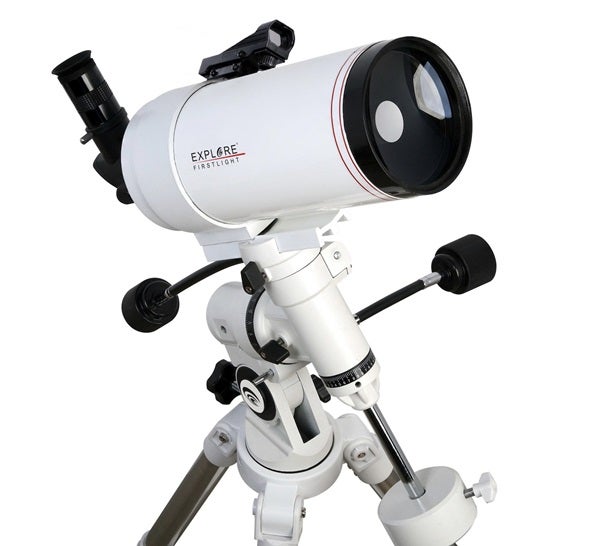
Mounted on the Twilight Nano Mount, this compact 3.9-inch (10 cm) Maksutov telescope is ideal for anyone who needs to carry their telescope down a flight of stairs or is short on storage space. The scope also comes with an eyepiece and a red-dot finder.
Explore Scientific FirstLight 100 specifications
- Price: $399.99. You can see updated prices and purchase this telescope here.
- Mount: German equatorial
- Aperture: 3.9 inches (10 cm)
- Focal length: 1400mm
- Focal ratio: f/14
- Eyepieces: 25mm (200x)
- Weight: 4 pounds (1.8 kg)
Meade ETX125 Observer Maksutov-Cassegrain

The ETX125 is perfect for aspiring astroimagers. Using the attached camera, one can look through an eyepiece, using the built-in star diagonal, and then quickly flip the mirror out of the way to take a photo.
Meade ETX125 Observer Maksutov-Cassegrain specifications
- Price: $829.99. You can see updated prices and purchase this telescope here.
- Mount: equatorial dual-fork
- Aperture: 5 inches (12.7 cm)
- Focal length: 1900mm
- Focal ratio: f/5
- Eyepieces: 9.7mm (196x) and 26mm (73x)
- Weight: 25 pounds (11 kg)
Celestron NexStar 8SE
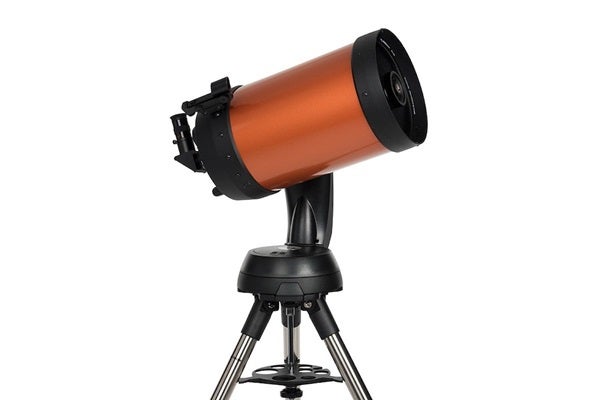
The NexStar 8SE features the legendary Celestron 8 telescope on a one-armed, computer-controlled mount that automatically locates and tracks objects selected from the onboard database. It comes with a red-dot finder, a 25mm eyepiece, and a star diagonal.
Celestron NexStar 8SE specifications
- Price: $1,599.00. You can see updated prices and purchase this telescope here.
- Mount: altitude-azimuth
- Aperture: 8 inches (20.3 cm)
- Focal length: 2032mm
- Focal ratio: f/10
- Eyepieces: 25mm (81x)
- Weight: 24 pounds (10.9 kg)
Which telescope is best? That depends so much on you, your expectations, and your budget. But in my experience, the best telescope doesn’t have to be the biggest or the most expensive. The best telescope is one that is used often and enjoyed by its owner!

